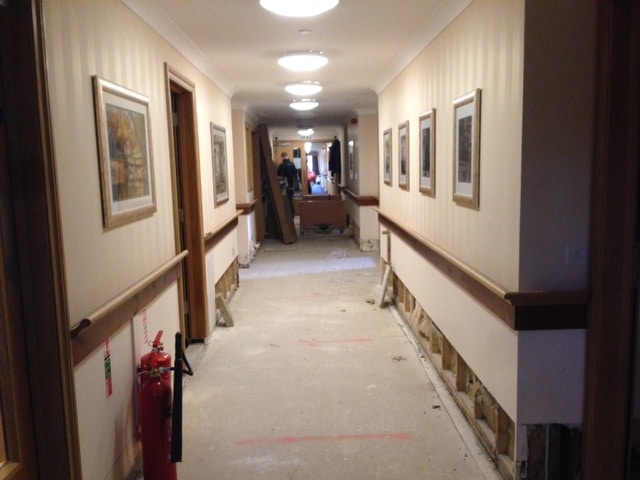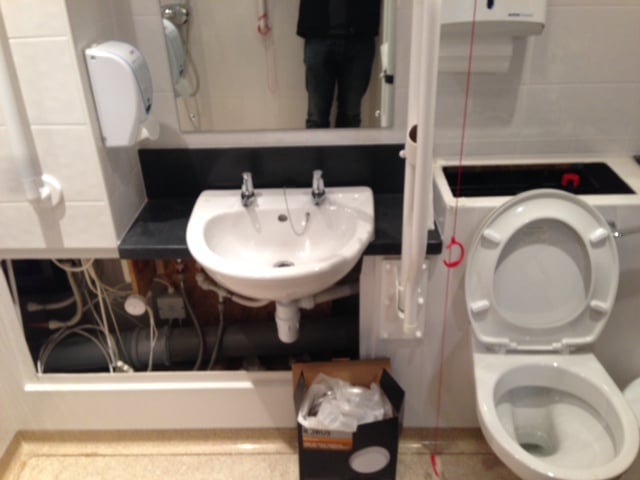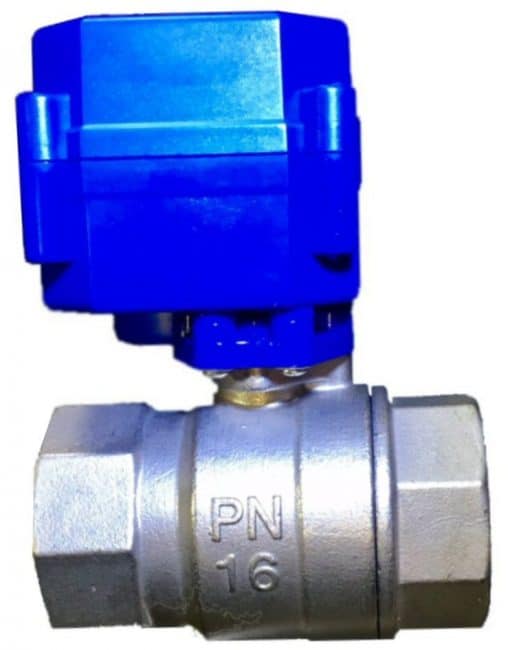Blog
How to stop a water leak before too much damage is done
Water leaks can cause extensive damage to property and equipment as well as generating disruption and inconvenience. The following pictures show how a long term small undetected water leak resulted in extensive damage to walls, floor and facilities in a care home leading to the closure of six bedrooms and the temporary relocation of six elderly and frail people whilst repairs were carried out.

The source of all the damage and disruption to the care home was a small leak from one on the many water pipe joints hidden behind the panelling in one of the bathroom service cupboards. The water had been leaking onto the screed floor over a long period of time and had travelled the length of the corridor affecting all six rooms.

Whilst the insurance company will pay for repairs and replacements, it won’t compensate for the disruption or inconvenience caused to you or others as a result of the water damage, nor will it compensate for treasured items or irreplaceable documents or data.
So what can be done to help stop water damage ..?

To help minimise the damage and subsequent disruption caused by water leaks CMR Electrical manufacture all their water leak detection alarms with the capability of turning off the water flow, thereby stopping the leak before it can cause too much destruction. Unlike some systems on the market, CMR Electrical water shutoff valves, do not reduce the flow of water through pipework, nor do they run hot when powered see our Blog about preventing further water damage after a leak.
A number of systems on the market use standard solenoid valves that operate much like a water tap, only with an electrically operated plunger. Inside this type of valve is a rubberised gasket sitting over the water inlet port orifice. When asked to open the electrically operated plunger moves allowing water to pass through the inlet port past the rubberised washer to the outlet port. This configuration along with the internal washer to orifice resistance dramatically reduces the amount of water that can flow through it. Another problem with this type of valve is the small distance between the washer and orifice when open. In new installations it has been found that debris within the water pipe caused by pipework installing, clogs the valve seat stopping it from fully closing when asked to.
Standard solenoid valves also run hot as the actuator coil needs to be permanently energised to keep the internal steel plunger in position. During appraisal testing, we recorder actuating coil temperatures of 95°C. For this reason, this type of valve must NOT be energised without water in the pipework, as the water is used to dissipate heat from the operating coil. Energising this type of valve without water in the pipework will eventually burnout the operation coil leading to a catastrophic failure.
For this reason, CMR Electrical valves operate by rotating a stainless-steel ball with an opening through the centre the same size as the inlet and outlet ports. When asked to open, the ball is rotated until the opening within the ball is in line with both ports, thereby not restricting the flow of water between the input and output ports. Because the valve only draws current for a few seconds whilst moving the ball into position, no heat is generated and the valve runs cold.
For more information visit our website at CMR Electrical Ltd, phone us on 01825733600 or fill in the Get in touch form so we can advise you on the best water leak detection system for your application.


